MLB 111 - Study Unit 6 Learning Outcomes
1/16
There's no tags or description
Looks like no tags are added yet.
Name | Mastery | Learn | Test | Matching | Spaced |
|---|
No study sessions yet.
17 Terms
Briefly explain the role of binary fission in the bacterial cell cycle.
Binary fission is the primary method of reproduction in bacteria, where a single bacterial cell divides into two identical daughter cells.
Growth and Reproduction
Genetic Consistency
Adaptation and Evolution
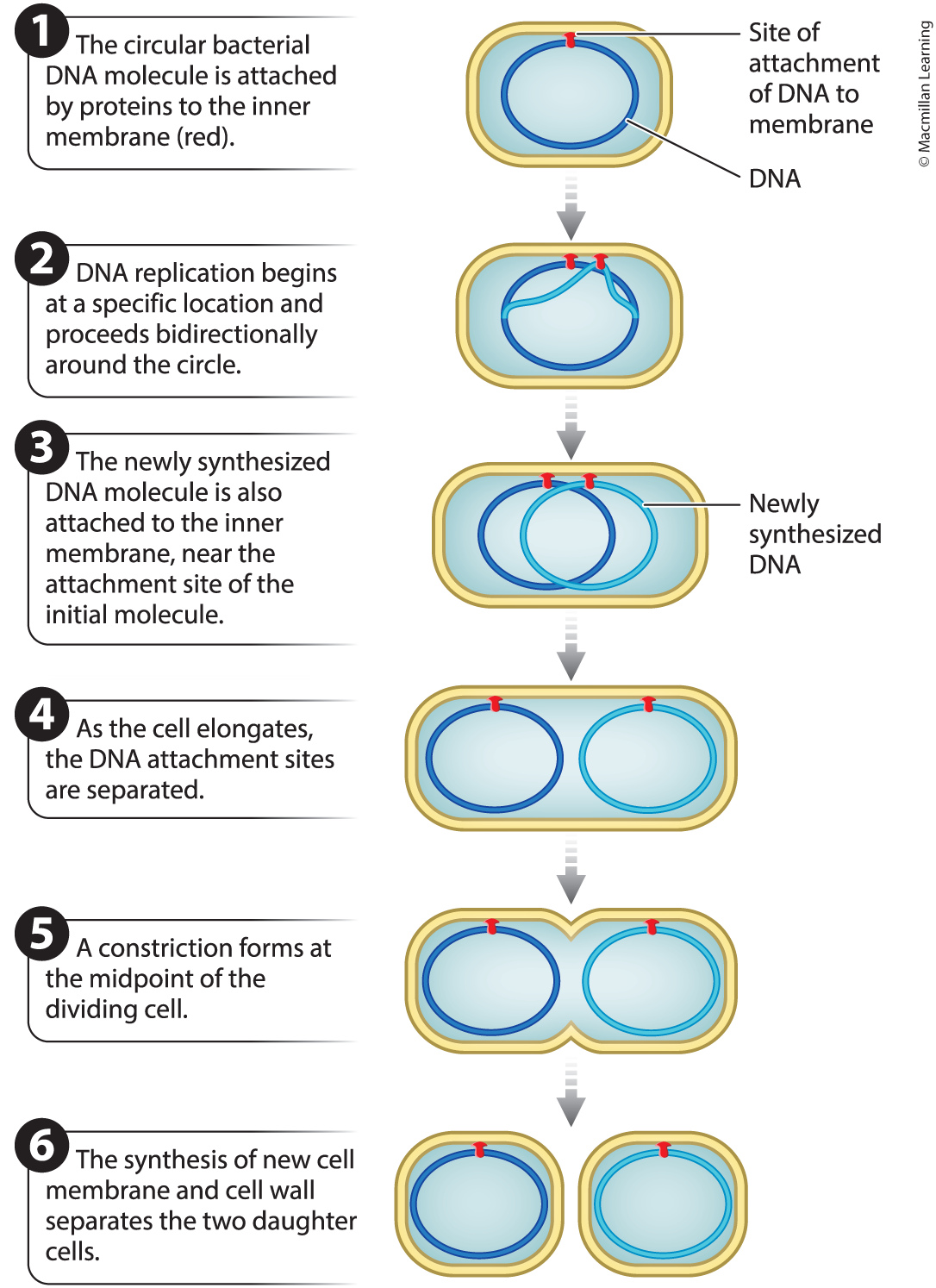
Draw and label a diagram of the cell cycle, and discuss the cellular processes that occurs in interphase and M-phase, including the specific sub-phases of interphase.
M phase:
When the parent cell divides into two daughter cells.
Interphase, the cell prepares to divide:
G1 phase: cell growth and expression of regulatory proteins.
S phase: DNA synthesis.
G2 phase: preparation for mitosis.
G0 phase: occurs in a cell that is not actively dividing, so no preparation for cell division occurs.
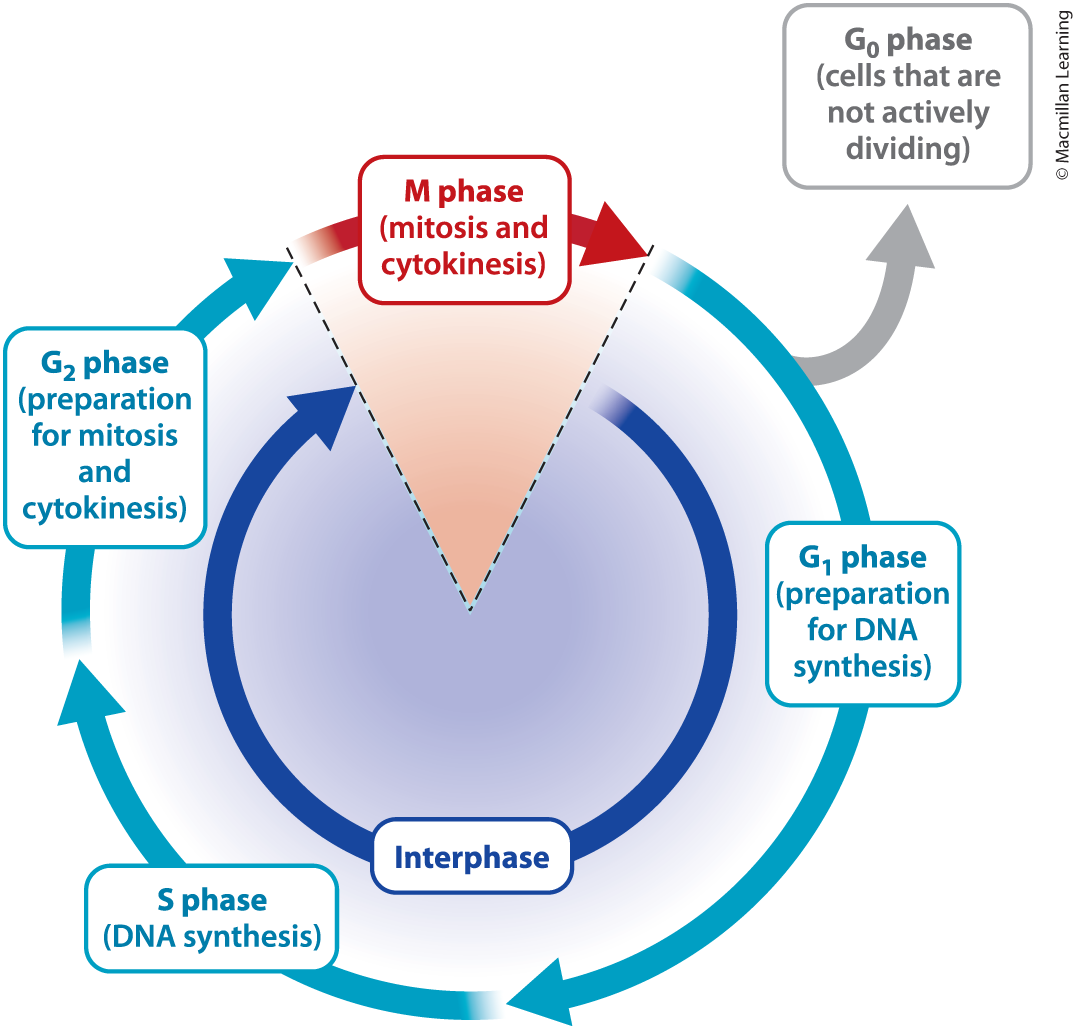
Define mitosis, cytokinesis and chromosomes, and discuss their link to the cell cycle.
Mitosis: Mitosis is the process of nuclear division in eukaryotic cells, where one parent nucleus divides to form two genetically identical daughter nuclei; ensures that the duplicated chromosomes are accurately segregated into two daughter nuclei, maintaining genetic consistency across cell generations.
Cytokinesis: Cytokinesis is the process by which the cytoplasm of a single eukaryotic cell divides to form two daughter cells, each containing one of the newly formed nuclei from mitosis; completes the cell division process by physically separating the cytoplasm into two daughter cells, each with a complete set of chromosomes.
Chromosomes: Chromosomes are long, thread-like structures made of DNA and proteins (histones) that carry genetic information. In eukaryotic cells, chromosomes are located in the nucleus; chromosomes are duplicated, and each daughter cell must receive an identical set of chromosomes, which is ensured by mitosis and cytokinesis.
Explain what is meant by semiconservative DNA replication by referring to the origin of the template strand and daughter strand.
During replication, the two strands of the parental molecule separate. Each parental strand serves as a template for the synthesis of a new daughter strand.
Explain the role of the origin of replication as well as the replication bubble with 2 replication forks in DNA replication.
The origin of replication is any point on a DNA molecule at which DNA synthesis is initiated. Initiation Site, Binding Site for Initiator Proteins, Unwinding of DNA, Formation of Replication Machinery
A replication bubble (Bidirectional Replication) is a region formed by the opening of a DNA duplex at an origin of replication, which has a replication fork (Leading and Lagging Strands, Enzymatic Activity) at each end.
Describe the way in which DNA is replicated with reference to the following:
(a) The role of the proteins/enzymes in the DNA replication process. This includes Helicase, Topoisomerase, DNA polymerase, RNA Primase, DNA ligase and the single-strand binding protein.
(b) The nature and function of the RNA primer in the replication process.
(c) The involvement of Okazaki fragments in replication.
(d) The synthesis of the leading and lagging strands.
(e) The direction in which chain elongation occurs.
(f) The role of proofreading in the replication process.
Draw the replication process by means of a diagram of either a single replication fork or the two replication forks in a replication bubble. All the components in the outcome 6a-6e should be included.
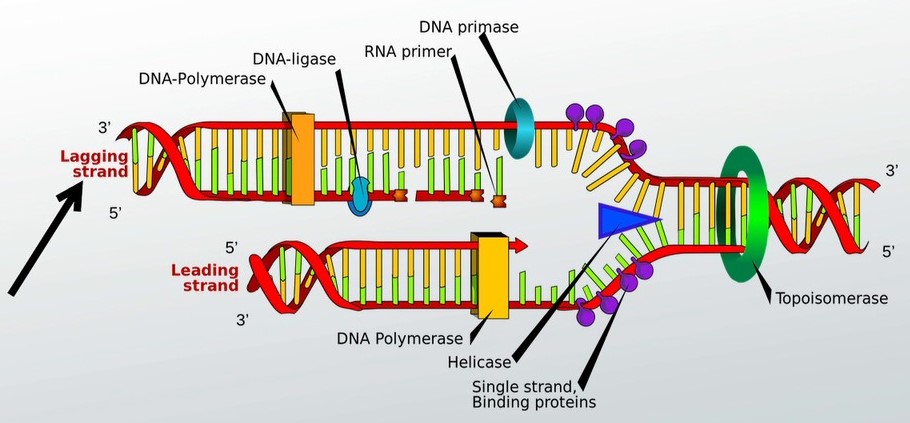
Describe the role of telomerase in the replication of telomeres specific to Eukaryotic chromosomes.
Telomeres are the ends of the linear chromosomes.
The sequence 5‘-TTAGGG-3’ is repeated 1500-3000 times at each telomere.
The enzyme telomerase is able to extend the ends of the chromosome to address chromosome shortening.
Describe what is meant by a karyotype.
The complete set of chromosomes in a cell, visually represented and organized in a systematic way. It includes the number, size, shape, and structure of the chromosomes.
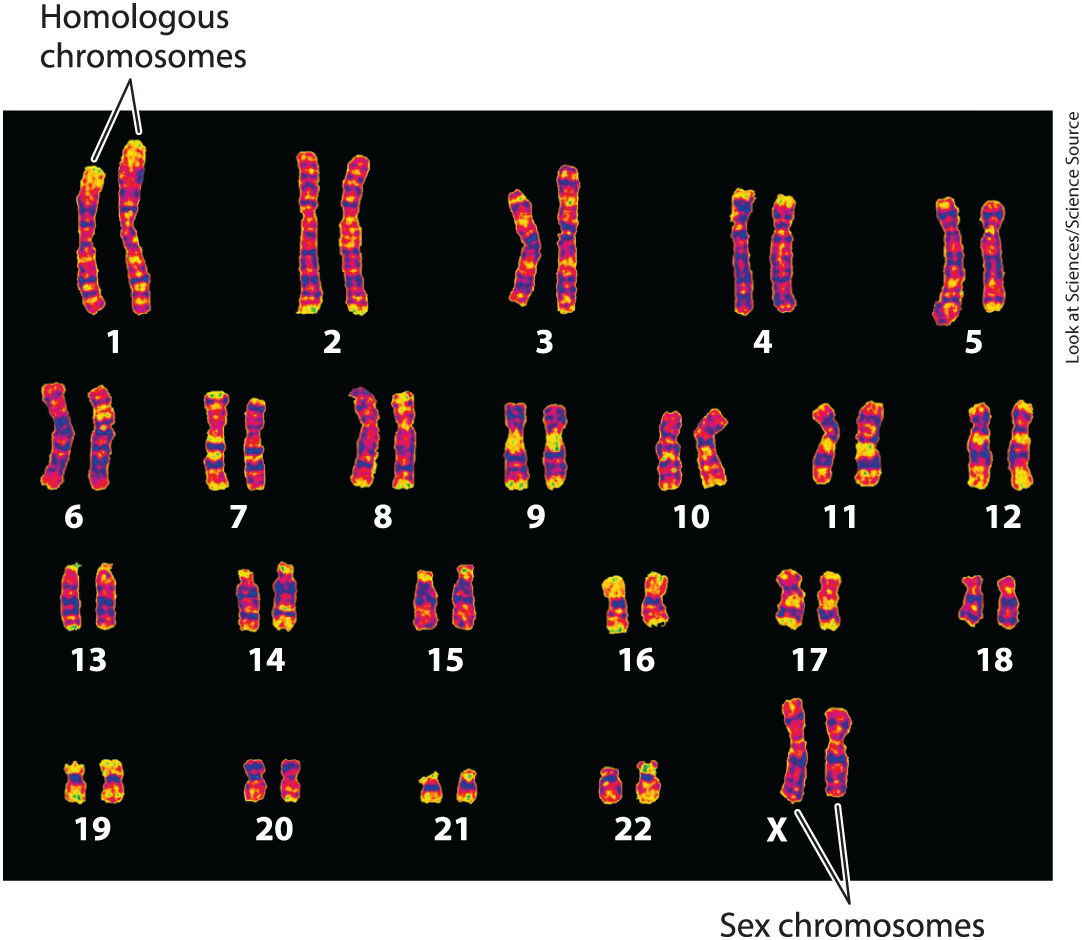
Contrast replicated and unreplicated chromosomes with reference to homologous chromosomes, sister chromatids, haploid and diploid cells, and centromeres.
Diploid (2n) means two complete sets of chromosomes, one from mom, one from dad. Haploid is a single set of chromosomes.
Looking at a pair of homologous chromosomes:
Unreplicated - One DNA molecule per chromosome, total 2 DNA molecules. One centromere each.
Replicated - Two DNA molecules per chromosome, total is 4 DNA molecules. One centromere each. One replicated chromosome consists of two sister chromatids.
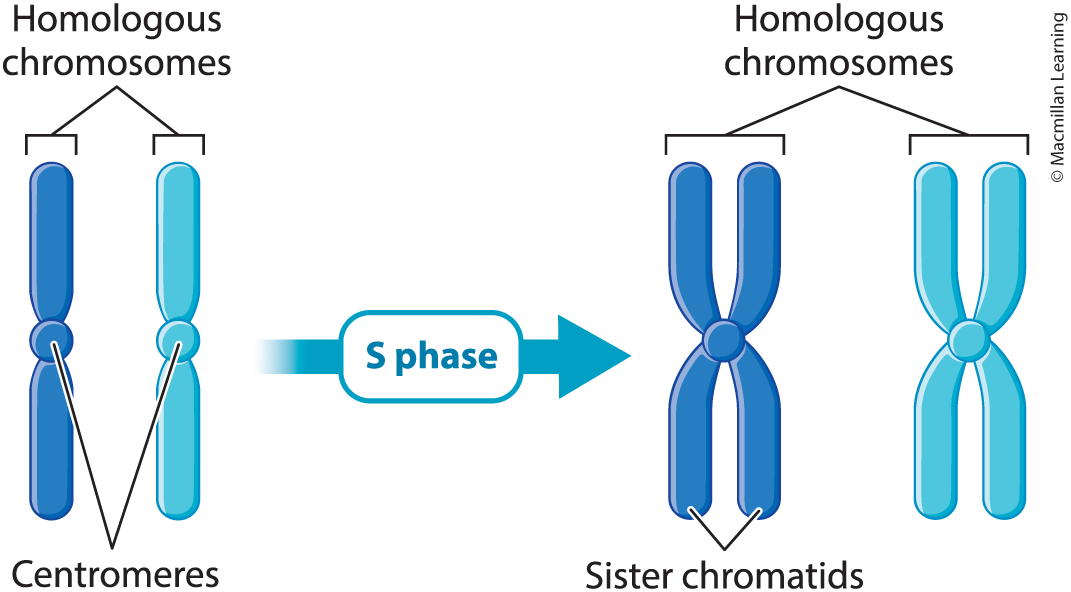
Describe the phases of mitosis.
Prophase - Chromosomes condense and microtubules assort into the mitotic spindle
Prometaphase - The nuclear envelope disintegrates, and chromosomes bind to microtubules
Metaphase - Microtubules move the chromosomes to the middle of the cell
Anaphase - Sister chromatids separate due to the pulling action of the microtubules
Telophase - The chromosomes start to decondense and the nuclear membrane reforms
Cytokinesis - Cell divides, producing two daughter cells
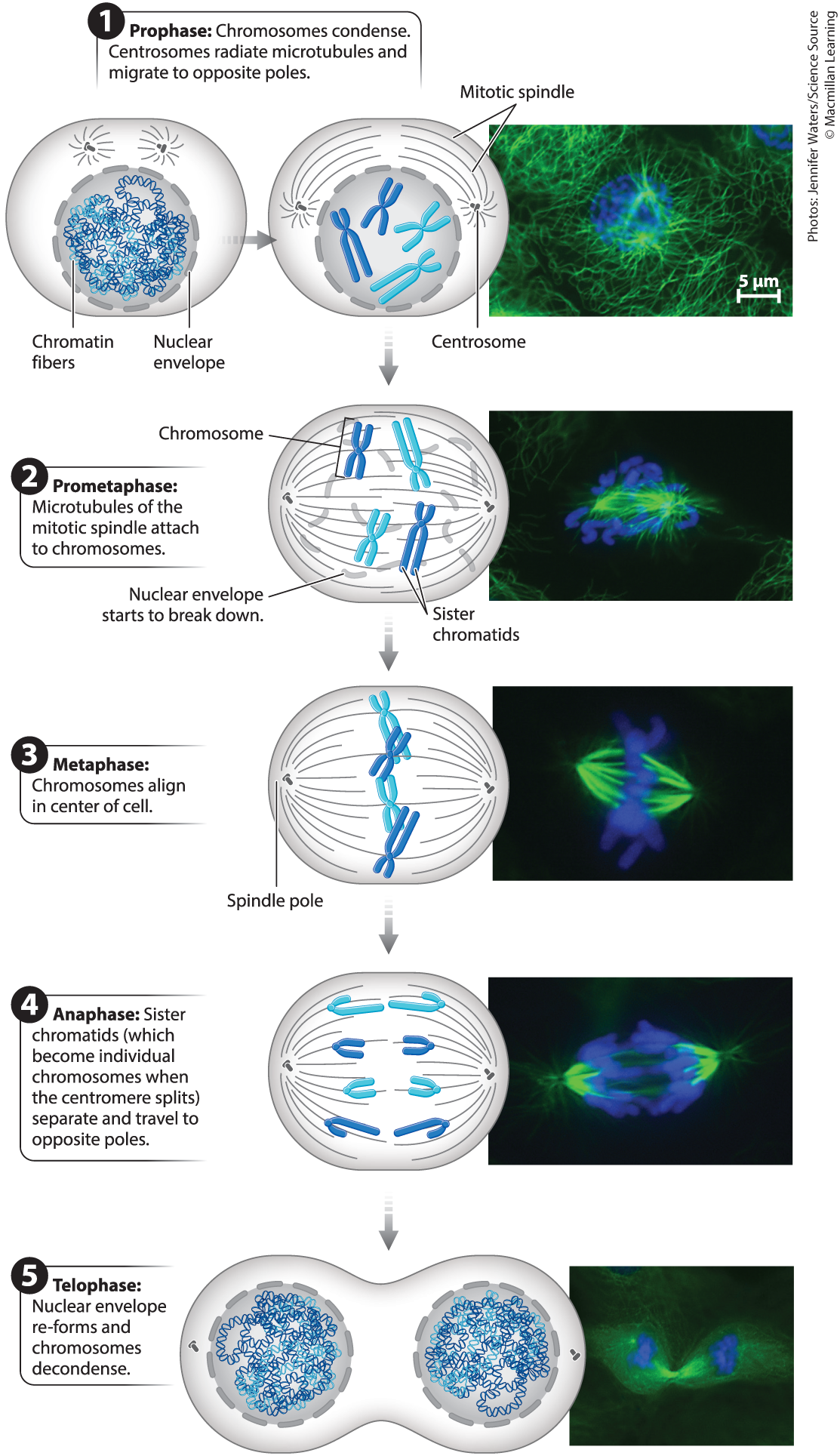
Briefly describe cytokinesis in plant and animal cells.
Animal cells - Actin filaments form a contractile ring. Ring contracts, pinching cytoplasm of the cell and dividing it in two.
Plant cells- Cell plate forms in the middle of the dividing cell. Once the cell plate is large enough, it fuses with the cell wall of the original cell.
Mention the processes that promote and prevent cell division as part of the cell cycle regulation.
Promote:
Cyclins and Cyclin-Dependent Kinases (CDKs)
Oncogenes
Prevent:
Tumor Suppressor Genes
Cell Cycle Checkpoints
Apoptosis
Discuss the role of cyclins and cyclin-CDK complexes in cell cycle regulation.
Cyclins are the proteins that appear and disappear throughout the cell cycle.
Cyclins activate cyclin-dependent kinases (CDKs).
Active CDKs promote cell division and the progression through the stages of the cell cycle.
Cyclins mediate progression through interactions with the appropriate CDK.
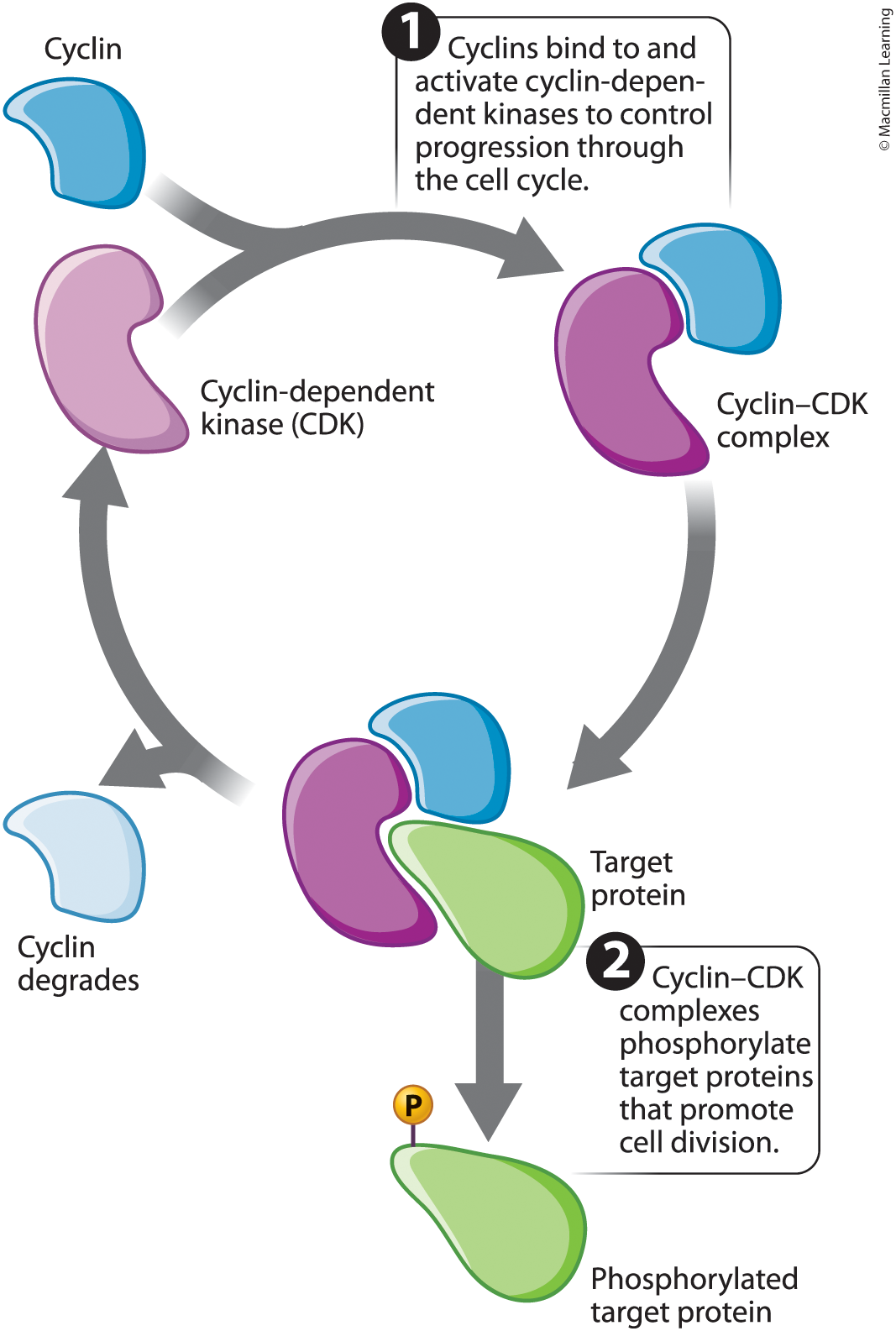
Define the checkpoints in the cell cycle and explain their role in cell cycle regulation.
Cell cycle checkpoints are surveillance mechanisms that monitor the order, integrity, and fidelity of the major events of the cell cycle.
Three major stages in the cell cycle:
DNA damage checkpoint (before S phase) - Is DNA damaged?
DNA replication checkpoint (end of G2) - Is all DNA replicated?
Spindle assembly checkpoint (before anaphase) - Are all the chromosomes attached to the spindle?
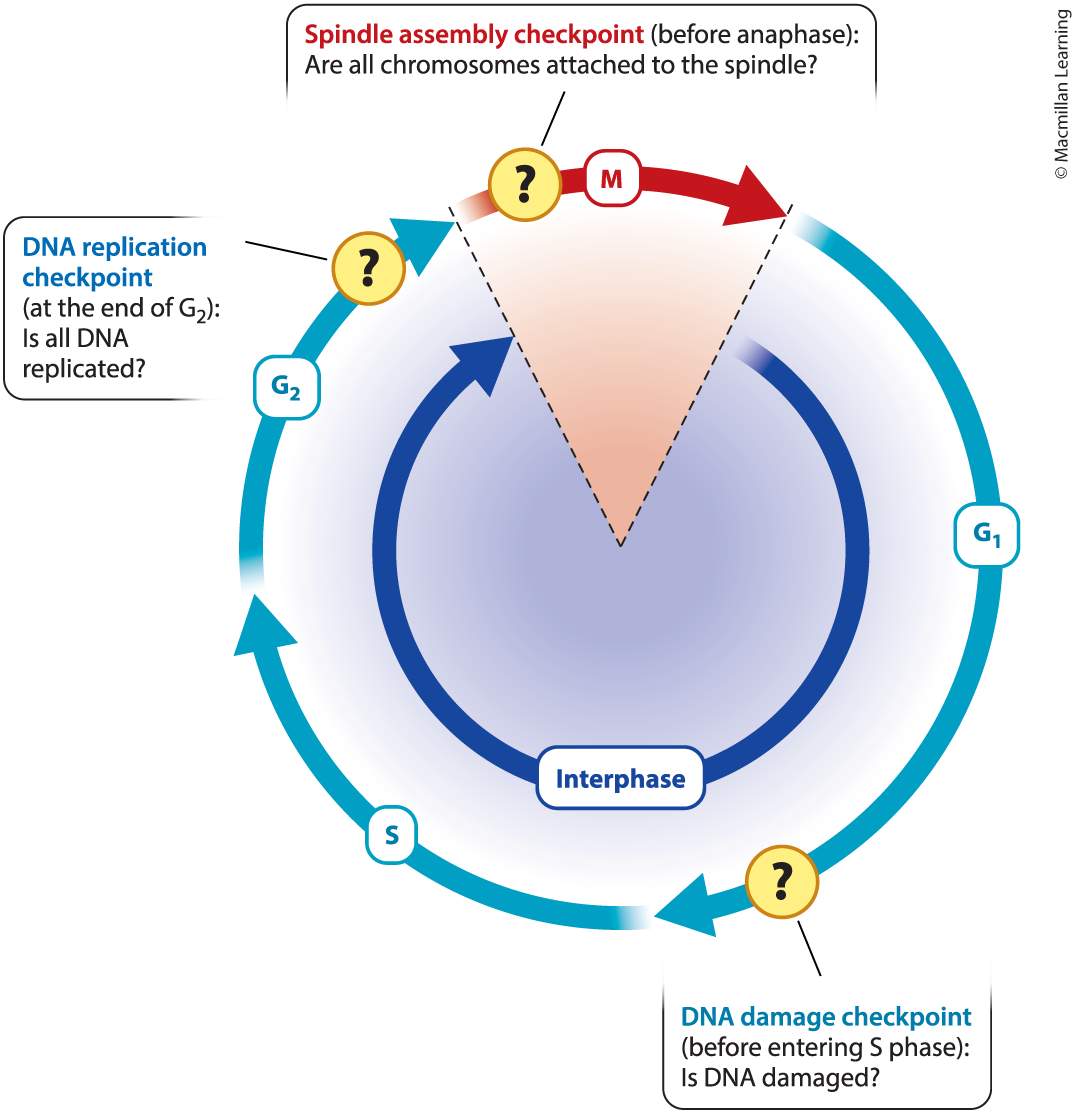
Discuss the role of p53 in cell cycle regulation.
DNA damage checkpoint: p53 is a protein found in the nucleus. DNA damage activates protein kinases that phosphorylate p53. Phosphorylated p53 turns on genes that inhibit the cell cycle. Inhibiting the cell cycle gives the cell time to repair the damaged DNA.

Define cancer and discuss the role of proto-oncogenes, oncogenes, and tumor suppressor genes in the cell cycle with relation to cancer control.
Cancer is a disease caused by an uncontrolled division of abnormal cells in a part of the body.
Proto-oncogenes are genes that promote cell division, allowing cell growth. These genes can function by stimulating cell division (growth factors) or preventing apoptosis. These genes has the potential to cause cancer when mutated into oncogenes.
An oncogene is a gene that causes cancer. It results from a mutation in a proto-oncogene.
Tumor suppressor genes are genes that slow down cell division, limiting cell growth. These include genes that function by stimulating apoptosis and DNA repair. These genes has the potential to cause cancer when mutated.